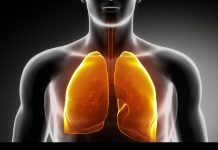Sleep apnea is a serious sleep disorder that occurs when a person’s breathing is interrupted during sleep. People with untreated sleep apnea stop breathing repeatedly during their sleep, sometimes hundreds of times. Untreated sleep apnea puts you at heightened risk of high blood pressure, diabetes, stroke, depression, and even heart disease.
While statistics show that sleep apnea is most common in adult males, that doesn’t necessarily mean other demographics are safe. In fact, women and even children are at risk too. While it may not be as common in children as it is adults, studies show more than 3% of children are estimated to have obstructive sleep apnea which in a recent study found, has caused depression and major brain damage.
Can sleep apnea affect the brain? Children who suffer obstructive sleep apnea experience sleep interruption, which can lead to irritability, poor concentration and slower growth. However, these children often have other and more serious ailments to deal with. A recent study set out to investigate the effect of sleep apnea on the brains of 7-to 11-year-olds. The 16 children with obstructive sleep apnea were evaluated at the University of Chicago’s pediatric sleep laboratory and undergo neurocognitive tests and were scanned using MRI.
The test results and brain scans were compared with nine children without sleep apnea, matched for gender, age, weight, and ethnicity. Once the analysis was complete, they discovered the children with obstructive sleep apnea had substantial reductions in the volume of gray matter (the information processing part of the brain). The gray matter losses appeared in a range of brain regions – here are 5 particular areas of brain damage from untreated obstructive sleep apnea with their specific symptoms:
- The Right Insular Cortex – this is the area of the brain that regulates sympathetic control of the autonomic nervous system. If the insular cortex is damaged, baroreflex control is affected. The insular also controls nerve endings that relate to pain. Both OSA and sleep apnea patients are found to have insular cortex injury.
- The Ventrolateral Medulla (VLM) – This area of the brain controls breathing and blood pressure regulation. Injury of this area blunts and delays heart rate responses to sudden pressure changes. One sided VLM injury leads to an asymmetric response to blood pressure challenge, which can potentially cause heart rhythm problems.
- The Cerebellum – is the area of the brain that helps adjust blood pressure control and motor coordination, including breathing. Damage to this area prevents the ability to coordinate vascular and motor activity.
- The Hippocampus – is found to be significantly smaller in people with obstructive sleep apnea. This area of the brain processes short and long-term memory and spatial navigation. One study found that hippocampal damage can be partially reversed after a period of CPAP. The hippocampus is also one of the first areas to be damaged in Alzheimer’s disease,
- Mammary Bodies – are important for memory recall, as well as for memory for certain smells. These structures are much smaller in patients with OSA, and almost nonexistent in patients with heart failure. The hippocampus and mammary bodies are also found to be damaged in chronic alcoholism,
Although these gray matter reductions were measured, the direct consequences can be difficult to measure. During the study, the children’s brains were not scanned before the obstructive sleep apnea began; therefore it is impossible to know when and how the damage occurred.
Sleep Apnea is a serious matter and should not be taken lightly.
Sleep apnea is characterized by long pauses in breathing or instances of very low breathing during sleep. These pauses can last up to a full two minutes and can occur hundreds of times over the course of one night.
Children with sleep apnea often experience learning difficulties and an erratic appetite as a consequence of the constant interruption of their sleep. Since they rarely or never reach REM sleep, they do not produce sufficient amounts of growth hormones. The long pauses in breathing also strain the heart and may in the worst case cause brain damage.
Parents who are aware of their children with this disorder should consider seeing a professional doctor right away. Untreated sleep apnea could really further damage the children’s brain and in some cases kill you. Of course you can avoid this by getting sleep apnea treated effectively and appropriately.
There are a few different ways to treat sleep apnea. One commonly prescribed treatment is CPAP, a specially-designed breathing device worn by patients while they sleep. This device is very effective but often said to be uncomfortable to wear while sleeping. Luckily, there are other options – for children, surgery is often recommended. If you need additional guidance, an experienced sleep dentist can fill you in on some CPAP alternatives to reduce the health risks of your children comfortably and effectively.
 Author Bio: Usman Raza is a freelance writer, marketing specialist at SnoringAids.com and co-founder of UsmanDigitalMedia.com. When not working, he’s probably spending time with his family. Follow him on Facebook @usmanraza40 and Twitter @usmanintrotech.
Author Bio: Usman Raza is a freelance writer, marketing specialist at SnoringAids.com and co-founder of UsmanDigitalMedia.com. When not working, he’s probably spending time with his family. Follow him on Facebook @usmanraza40 and Twitter @usmanintrotech.

















